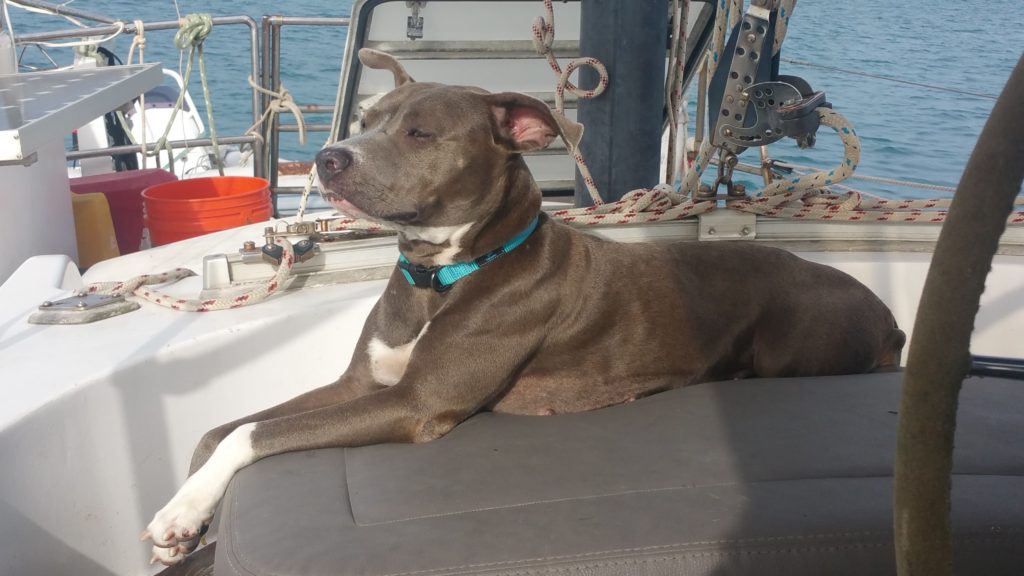
Have you ever heard the saying that we don’t pick our dogs, they pick us?
If you didn’t believe so, Lisa and Maya’s story may just change your mind.
Lisa & Maya Meet for the First Time
One evening on a little Caribbean island called St Croix, Lisa was relaxing in the farmhouse she was minding when she noticed something by the gate outside. When she went to investigate, Lisa was greeted by a ‘scared, shy, skinny stray’. Meet Maya.
The dog’s physical appearance convinced Lisa that no one had been looking after her for some time and there was a good chance that she was homeless. Despite her scrawniness this dog at her front gate had the sweetest nature and Lisa believed it wouldn’t take long for someone to fall in love with her and give her a forever home, so she took the dog to the local shelter, confident of a quick rehoming.
A few weeks later Lisa received a phone call from the shelter. Her mysterious canine friend had not been adopted as she had anticipated and was sadly facing euthanasia. The shelter in no uncertain terms stressed that someone needed to save this dog as she was shortlisted on Death Row with no hope of being adopted. Lisa was Maya’s only lifeline.
As liveaboards on a sailboat, Lisa and her partner hadn’t considered having a dog on board, yet out of nowhere, the decision was being made for them. Lisa and her partner felt that this sweet-tempered little dog deserved much more in her young life than she had lived to this point. They adopted Maya with an open mind to give her another chance, this time a loving and adventurous life with them aboard their yacht.
Did Maya have any physical or emotional challenges to overcome?
Sadly, we live in a world where animals are abused and abandoned, and dear Maya had not escaped this cruelty. As time passed and Lisa spent more time with Maya she began to discover the extent of her emotional trauma.
‘At first, when I picked anything up, she was terrified that I might use what I was holding to hurt her’, Lisa says.
Over time Maya began to trust Lisa and felt safe knowing that she was not going to be hurt like someone had done to her in the past. Not all fears were alleviated as Lisa explains, Maya still isn’t fond of the ole bug-zapping racket and she wonders if somebody had possibly used one to hit her with in her old life.
Maya was also suffering severe muscular atrophy, (a decrease in muscle mass), especially in her hind legs. Lisa has learned that Maya had been chained up for long periods of time which is the suspected cause of her wasting muscle. Maya is a young girl, so the good news is that her physical fitness has improved significantly in Lisa’s care with a good diet and regular exercise.
It was also revealed that Maya had cruelly been chained up outdoors during Hurricane Maria in September 2017, with recorded wind speeds of in excess of 100mph. Maya suffered flesh wounds to her neck and broken teeth as she tried desperately to free herself from the chain. It’s hard to imagine the fear and desperation that this beautiful dog was living through to save her own life.
These days Lisa says Maya is suffering storm-related PTSD(Post Traumatic Stress Disorder) but with the caring and loving heart of her new mum, Maya is comforted through these times with creative solutions.
Subsequently Maya has her own collection of sun protection rashie vests. Lisa tells us, ‘I found that a snug fitting thrift store kids rash vest calms her enough to eat and sleep during bad weather.’ Such a simple and inexpensive result.
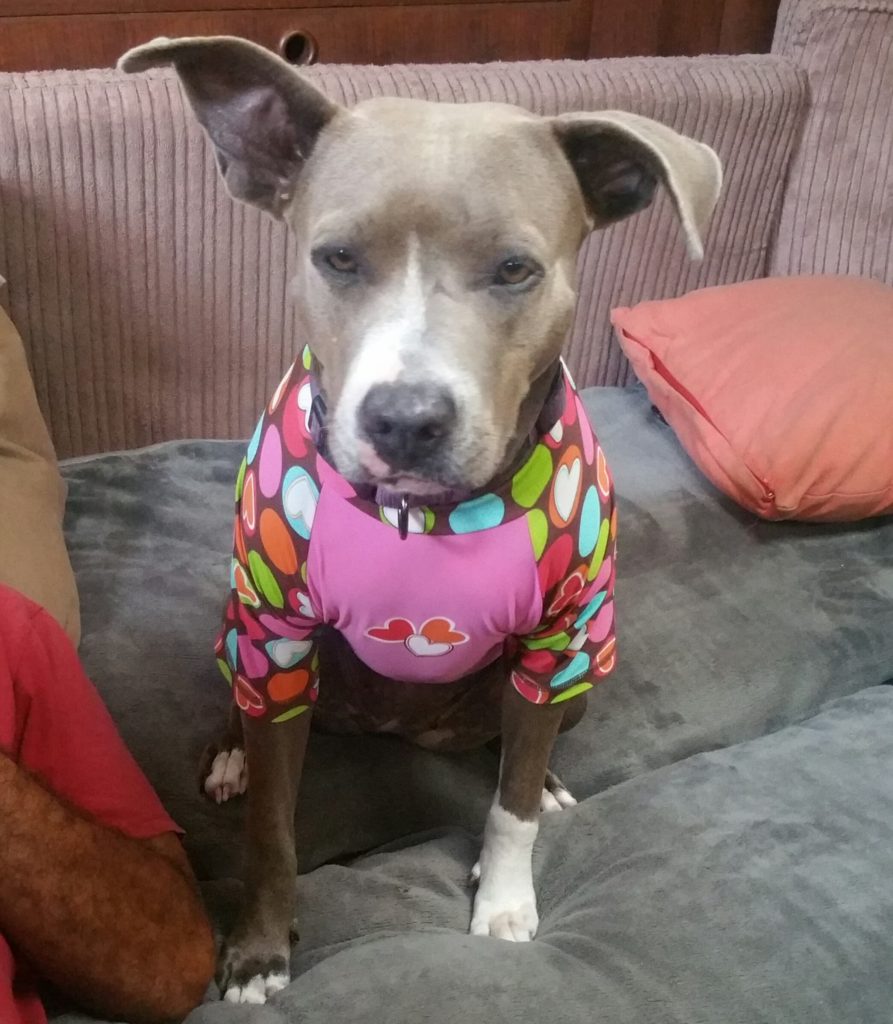
Anxiety Comforter Summer Collection.
As we know, sailboats tend to heel with a bit of wind filling the sails and when they do, if the cabin isn’t shipshape, loose items will fall, unsecured doors will bang, and relaxed pots will clang. These are noises that scare Maya and so Lisa spends extra time to stow anything that could be a potential threat to Maya’s stability.
When they are experiencing considerable rolling in bad weather Maya is comforted by the sound of fans, music or the television; a medley of white noise helping to relieve her anxiety.
How long did it take Maya to adjust to boating life?
Maya has adapted well to living on the boat however Lisa needs to be acknowledged for her patience and perseverance and above all her magnificent kind heart.
‘[Maya] was terrified, shaking with fear and clinging to me during her first dinghy ride. But, within a few days she was on the dinghy bow, leaning into the wind, ears flapping happily.’ Lisa paints this beautiful picture of a happy and secure sailing dog, a thousand lives away from her beginnings.
Toileting
Toileting is often a burden many doggy boat parent’s stress over. Maya quickly relieved herself and her parents of this worry. When Maya went to the toilet on land, Lisa soaked up some of Maya’s urine with a paper towel and deposited it under a mat of artificial grass on the boat in Maya’s designated toilet area. Clever Maya used her special area first thing the next morning! If only it was this easy for all boating dogs.
Access Within the Boat
Sailing boats can be awkward places to get around for us two-legged human kind, let alone a four-legged furry crew member.
Maya had to learn to navigate five-foot-high steep companionway stairs allowing her more freedom to move independently around her new home. Lisa was concerned about Maya’s lack of strength and coordination caused by the muscular atrophy, but she decided to take things slow and with incremental steps teach Maya how to use the stairs.
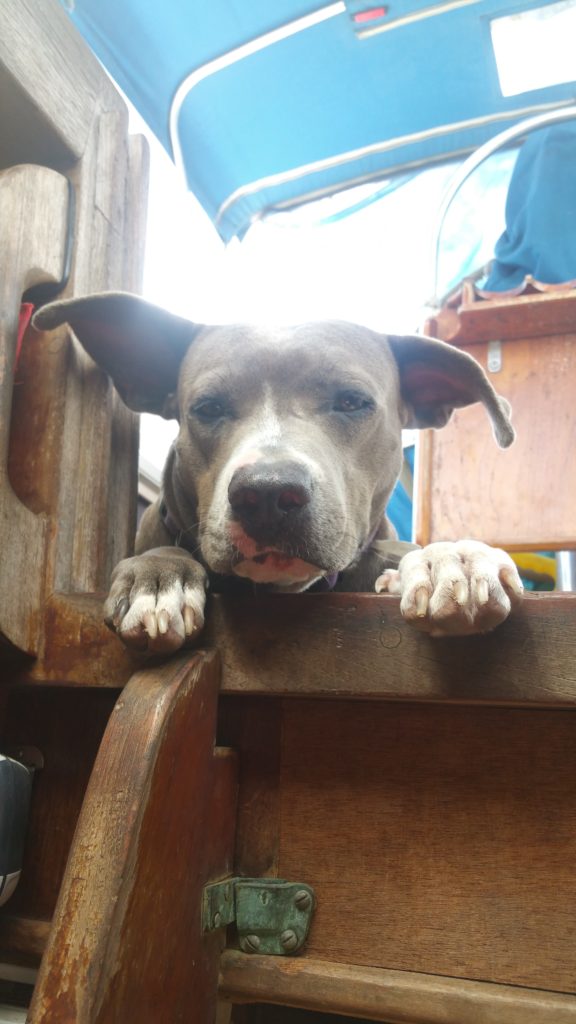
The brave [dog] is not he who does not feel afraid, but he who conquers that fear.
– Nelson Mandela-
One Step at a Time
Step by step starting on the lower treads Lisa physically moved Maya’s body teaching her the movements required to climb stairs. Over and over again, Lisa patiently trained Maya while supporting her with her own body one step at a time until Maya was confident to climb unsupported.
She was still scared to climb the stairs without Lisa present, so they added one last stage to her training. ‘We left her down below and went for a short dinghy ride’, Lisa said. ‘Panic at being abandoned was stronger than her fear of falling and like magic, she was waiting for us in the cockpit when we returned.’
Maya has proved to be a dog with undeniable resolve and with persistent training she was getting herself up the companionway stairs at her leisure.
She was able to get herself up, now she had to be taught how to get down.
Again, the training method Lisa implemented was all about building Maya’s confidence with small incremental stages. She would encourage Maya down onto the first step and then she would flop into Lisa’s arms to be lifted to the floor. Next, Maya advanced to the second step and again, flop herself into Lisa’s arms. By the third step Maya had decided it wasn’t that intimidating and she started to jump to the floor on her own albeit a little bit awkwardly. Practice makes perfect.
The training meant that Maya can get herself about the boat without the help of her parents and the exercise has also rebuilt her muscles. ‘Maya has a powerful muscular little body, and she now handles boat steps like a pro, and jumps in and out of the dinghy like she’s been doing it all of her life’.
What challenges does Maya face today?
Maya has come a long way since their meeting at the farmgate. These days she still suffers periods of anxiety when the boat is enduring bouts of bad weather, but her mum offers her the best remedy of all, lots of love and cuddles.
Like all young dogs, Maya’s training is ongoing. ‘Now that she is not tied up and has a strong powerful body, Maya loves to run. Getting her to come back when called can be a challenge, but further training will fix that.’
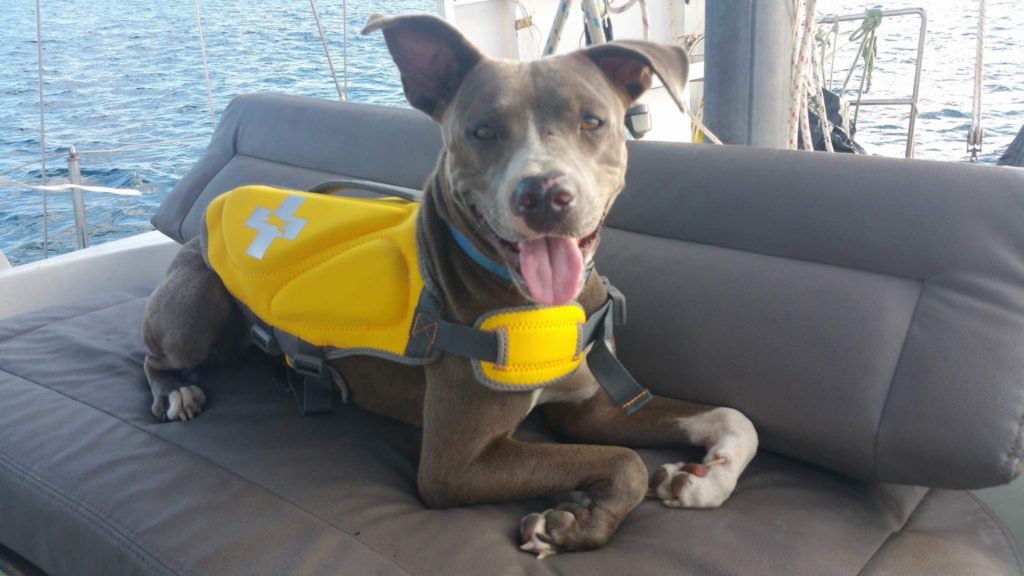
What advice would you offer others considering having a rescue dog on a boat?
Lisa shares with Dogs Who Sail some sound advice when it comes to choosing a rescue dog;
- Consider the dog’s temperament carefully. Calm dogs are easier on a boat than hyperactive dogs.
- Dogs that are keen to please their people are far easier to train and adapt more easily.
- Try to match crew and dog activity levels.
- Mixed breed rescues often have less health problems.
- Try to look past appearance and concentrate on a dog’s character and behaviour. Just because you like the way a dog looks does not mean that a dog will fit your lifestyle.
This wonderful story of patience and persistence coupled with incremental steps, lots of praise and love shows how effective training can be. Dogs are not these stubborn creatures that want to test our endurance, they want to please us and to do so they must first begin by trusting us.
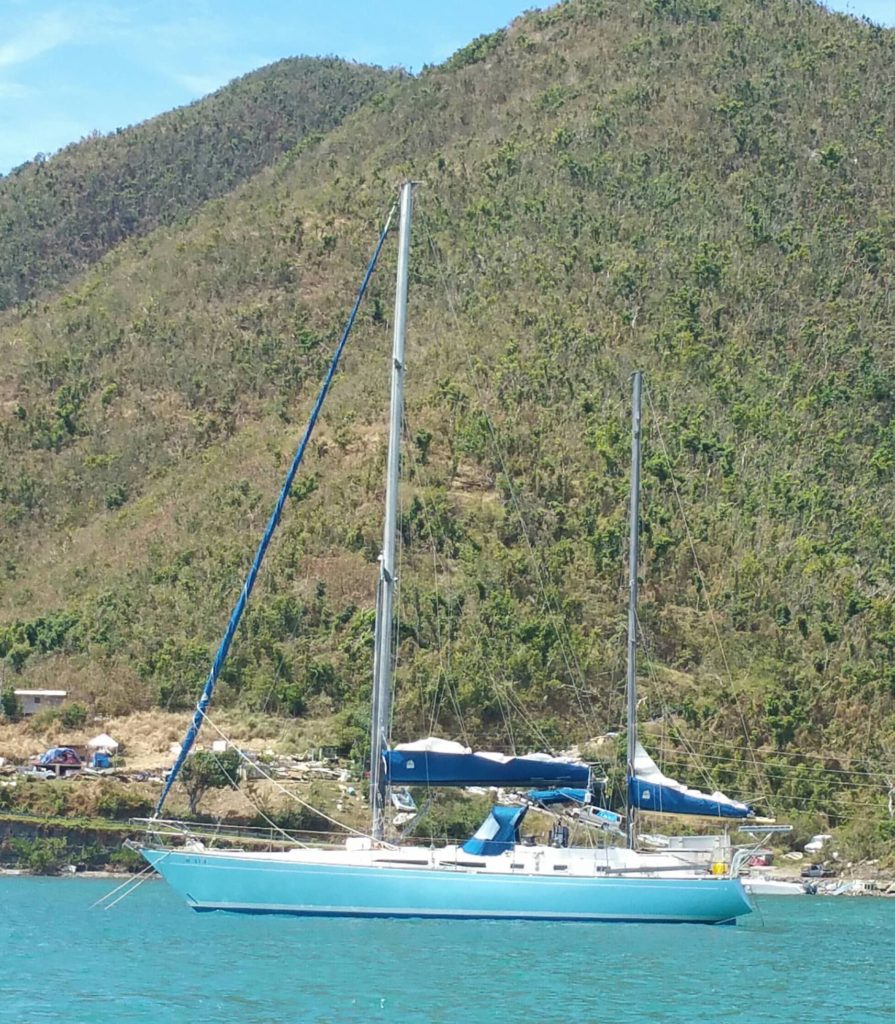
SV Hanuman – Maya’s Home
Maya’s new home is named after the Hindu monkey faced god who was abused as a child yet overcame and persevered. Hanuman represents true love, devotion and faithfulness.
Legend has it that the monkey god is believed to have jumped from island to island which is a great analogy for cruising.
Lisa and her partner and their beloved Maya are currently based in the US Virgin Islands, but would like to take Maya cruising extensively once the cruising kitty is healthy and Maya is more used to rolling seas.
Acknowledgement
A sincere thank you to Lisa Berry for allowing me to write and share your heart-warming story. To Maya, you have touched our hearts and I have no doubt your courage and determination will be an inspiration to many dogs who sail.
By Tanya Rabe

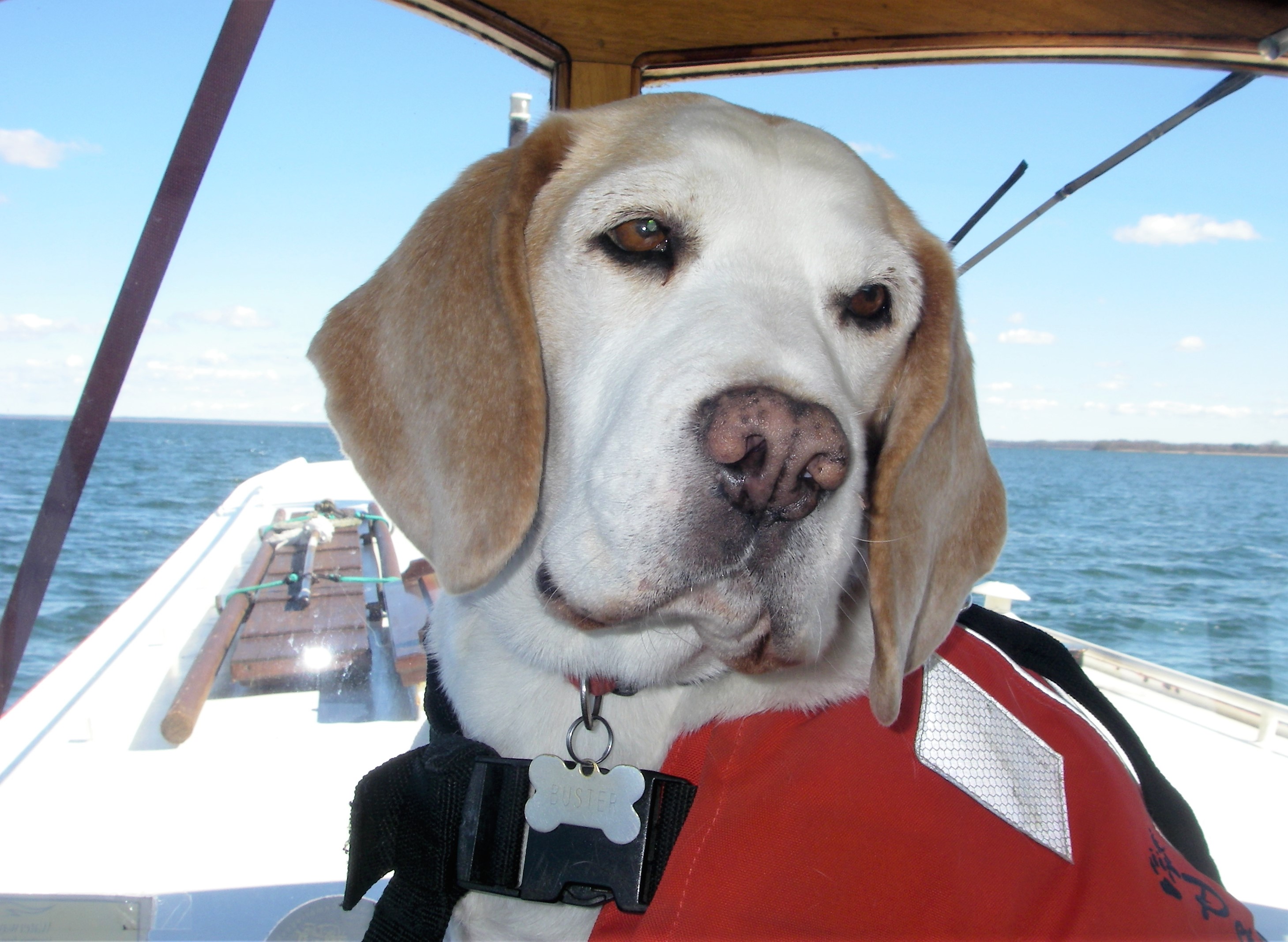
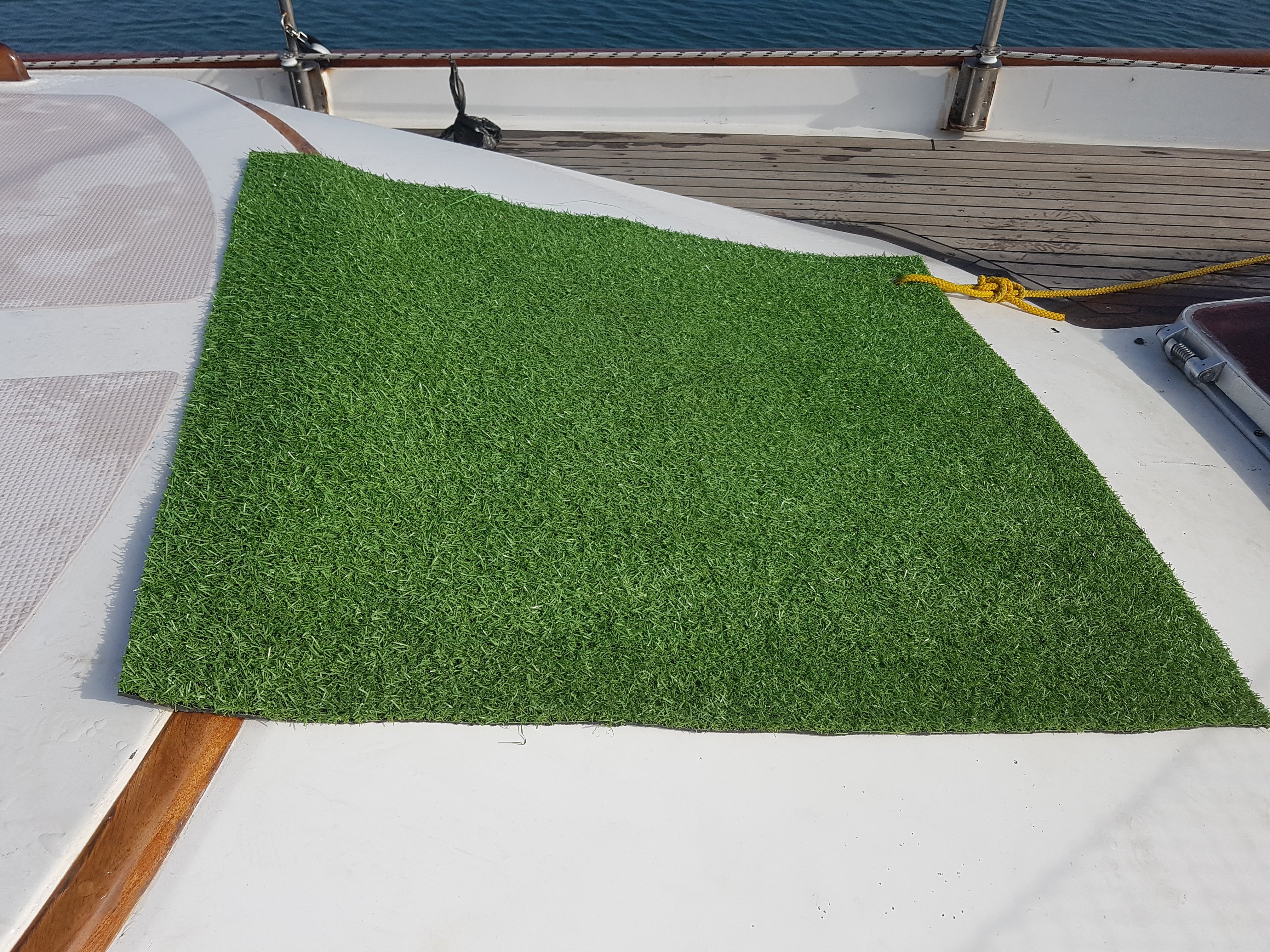


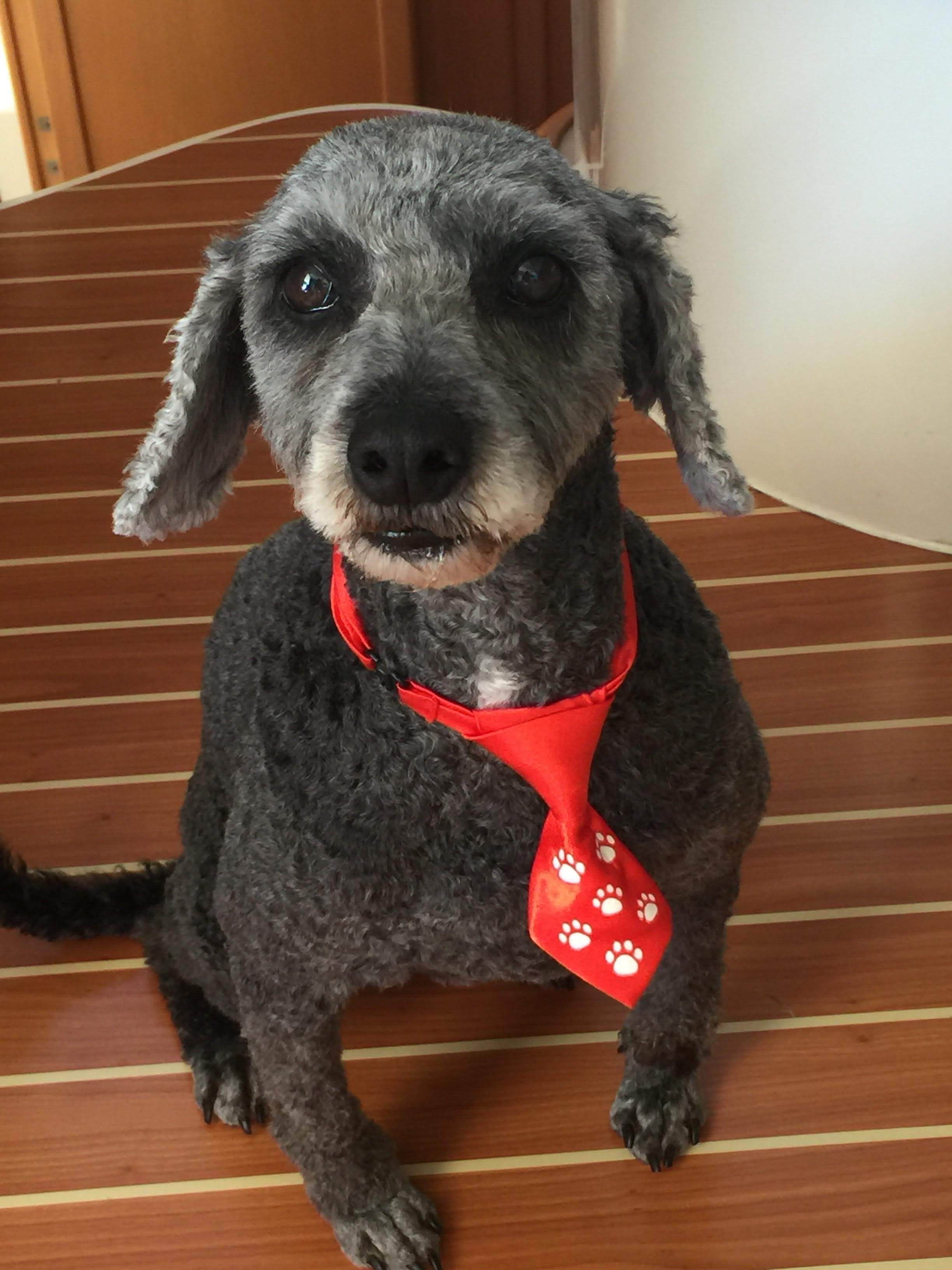
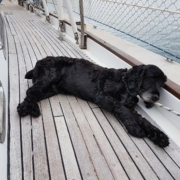



What a sad but beautiful story. Well done Lisa and may I add Maya is a cutie🐾
I really enjoyed reading Maya’s story. Felt her pain but also the love and care by Lisa. Well done.
Thank you again Tanya, well written and with a lot of feeling.
Rita